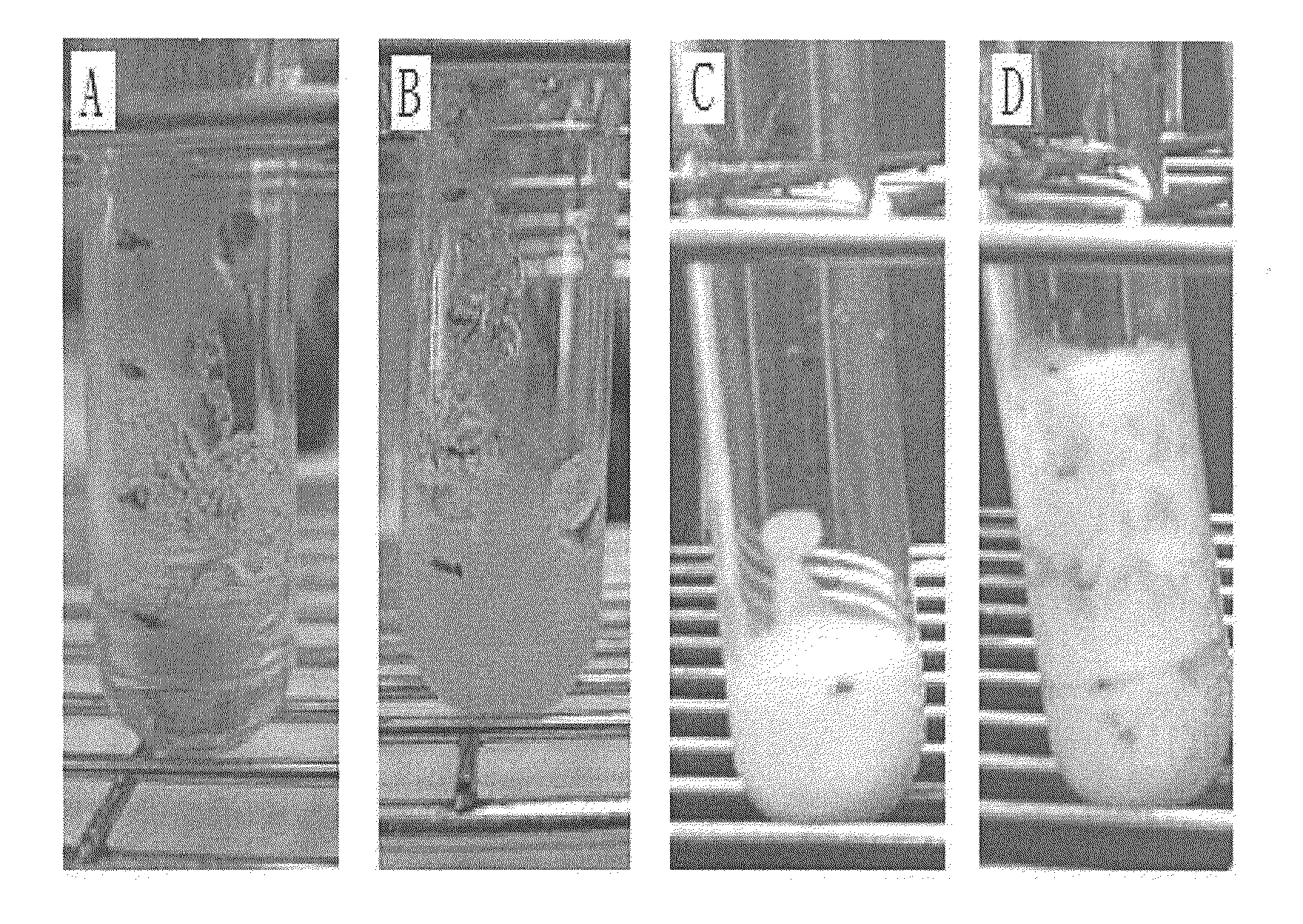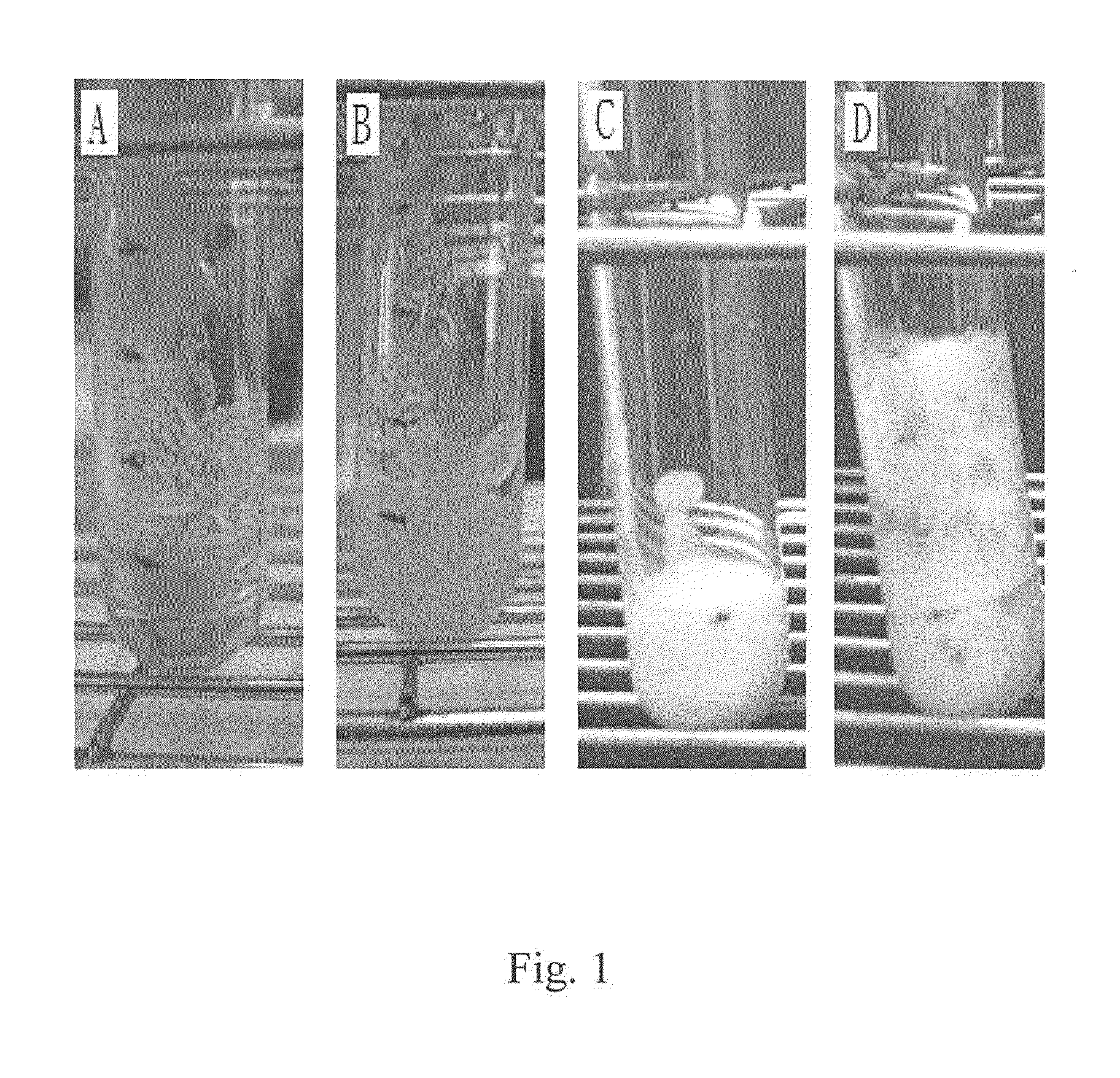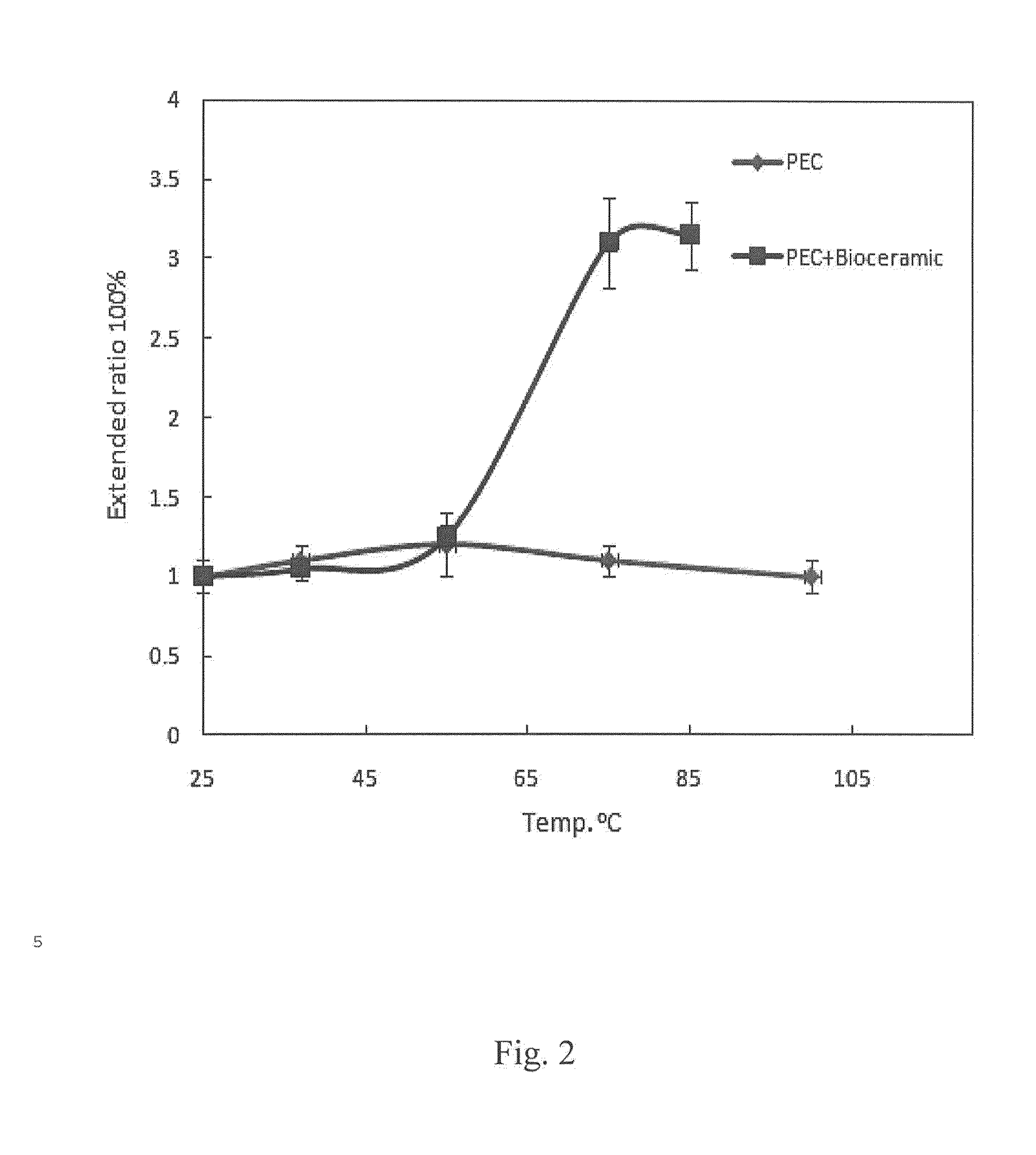Process for producing inorganic interconnected 3D open cell bone substitutes
a technology of open cell bone and inorganic interconnection, which is applied in the direction of prosthesis, drug composition, peptide, etc., can solve the problems of limiting the relevant application, limiting the use of such materials in orthopedic and dental applications, and too long degradation time of hydroxyapati
- Summary
- Abstract
- Description
- Claims
- Application Information
AI Technical Summary
Benefits of technology
Problems solved by technology
Method used
Image
Examples
example 1
Expansion of Heat Responsive Mixture of the Invention
[0048]The positive charge polyelectrolyte (10% Chitosan) solution and negative charge polyelectrolyte (2% HPMC) solution were mixed to form a polyelectrolytic complex, and the biomedical ceramic powders (HA:β-TCP =1:9) were then added to the complex to form a mixture by using a mixer, the weight percent of PEC, biomedical ceramic powder, and water is 6%, 25%, and 69%, respectively, in system. The volume of the mixture expanded from a temperature of around 55° C. After heating the resulting mixture to 75° C., the volume of the mixture expanded to 3.3 times the volume of the mixture at 25° C. (FIG. 1, (C) and (D)).
example 2
Production of 3D Open-Cell Bone Substitutes
[0050]The positive charge polyelectrolyte (Chitosan) and negative charge polyelectrolyte (HPMC) were mixed at a ratio of 1:1 (w / w, dry weight) and then a biomedical ceramic powder was added for mixing by using a mixer. The weight percent of PEC, biomedical ceramic powder, and water is 6%, 25%, and 69%, respectively, in system. The mixed material was put in the zirconia crucible, which was placed in a high temperature oven to raise its temperature in several stages. The heating process can be divided into three stages. In the first stage the temperature was raised from room temperature to 100° C. and then held for 1 hour. The heat for the second stage was raised from 100 to 300° C. at a rate of 1.67° C. / min, held for 1 hour at 300° C., and then raised from 300 to 1150° C. at a rate of 3.5° C. / min for the third stage and held for 5 hours at 1150° C. After sintering, the product was cooled in the oven.
[0051]FIG. 2 shows the relationship betw...
PUM
| Property | Measurement | Unit |
|---|---|---|
| temperature | aaaaa | aaaaa |
| weight percent | aaaaa | aaaaa |
| weight percent | aaaaa | aaaaa |
Abstract
Description
Claims
Application Information
 Login to View More
Login to View More - R&D
- Intellectual Property
- Life Sciences
- Materials
- Tech Scout
- Unparalleled Data Quality
- Higher Quality Content
- 60% Fewer Hallucinations
Browse by: Latest US Patents, China's latest patents, Technical Efficacy Thesaurus, Application Domain, Technology Topic, Popular Technical Reports.
© 2025 PatSnap. All rights reserved.Legal|Privacy policy|Modern Slavery Act Transparency Statement|Sitemap|About US| Contact US: help@patsnap.com



